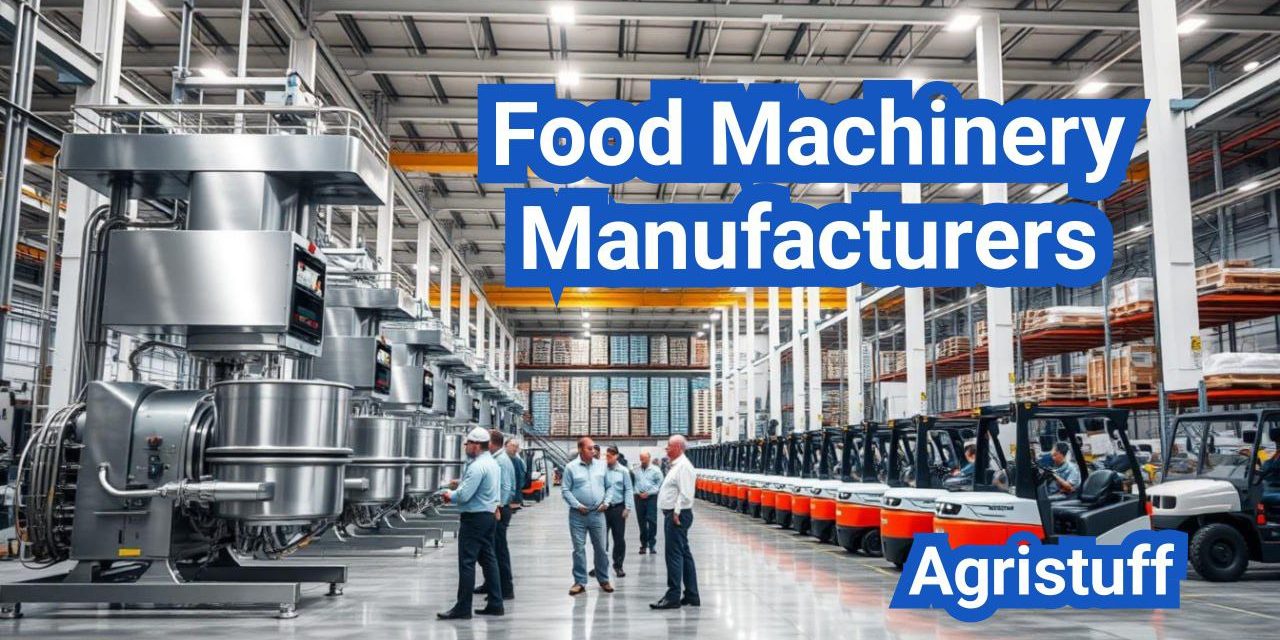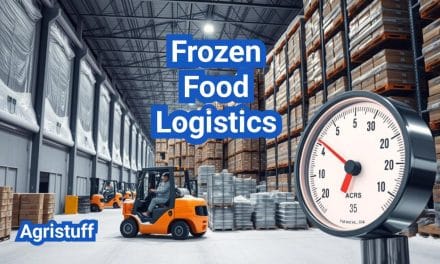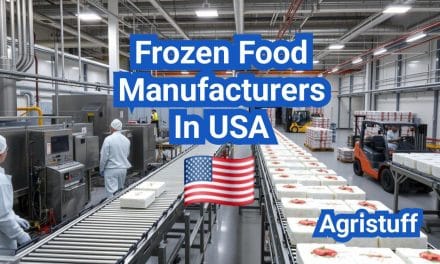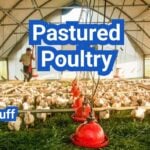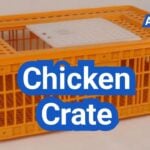Selecting a reliable food machinery manufacturers are crucial for ensuring smooth factory operations and maximizing return on investment in the U.S. market.
The food processing equipment industry is undergoing significant technological advancements, with trends shifting towards full automation and smart solutions.
Choosing a trustworthy vendor, such as those adhering to hygienic design equipment standards, is vital for maintaining high production standards and complying with regulatory requirements.
Key Takeaways
- Selecting a reliable vendor is crucial for smooth operations.
- The industry is trending towards automation and smart technologies.
- Hygienic design is essential for regulatory compliance.
- Reliable vendors ensure high production standards.
- Maximizing ROI is a key benefit of choosing the right manufacturer.
The U.S. Food Machinery Manufacturing Landscape
The U.S. food machinery manufacturing industry is undergoing significant transformations driven by technological advancements. This shift is largely influenced by the increasing demand for automation, energy efficiency, and compliance with environmental regulations.
Current Market Overview | Food Machinery Manufacturers
The U.S. food machinery market is characterized by a mix of large multinational corporations and specialized regional players. The industry is driven by the need for high-quality, safe, and efficient food processing equipment.
Key market drivers include:
- Increasing consumer demand for processed and packaged foods
- Stringent food safety regulations
- A growing focus on sustainability and energy efficiency
Industry Trends and Innovations | Food Machinery Manufacturers
The industry is witnessing significant innovations, particularly in automation and digitalization. Manufacturers are adopting Industry 4.0 technologies to enhance efficiency and reduce costs.
Some of the key trends include:
- Integration of IoT and AI in food processing machinery
- Development of more energy-efficient equipment
- Increased focus on hygienic design and cleanability
Economic Impact of Domestic Manufacturing
Domestic manufacturing of food machinery has a substantial economic impact, contributing to job creation and GDP growth. It also plays a crucial role in ensuring supply chain resilience.
| Economic Indicator | Impact |
|---|---|
| Job Creation | Direct and indirect employment opportunities in manufacturing and related sectors |
| GDP Contribution | Significant contribution to the national GDP through manufacturing activities |
| Supply Chain Resilience | Enhanced resilience due to reduced dependence on international suppliers |
Understanding Food Processing Equipment Categories

Understanding the different categories of food processing equipment is crucial for manufacturers to optimize their production lines. The food processing industry utilizes a wide range of equipment, each designed for specific functions and applications.
Primary Processing Equipment | Food Machinery Manufacturers
Primary processing equipment is used in the initial stages of food processing, where raw materials are transformed into a state suitable for further processing. Examples include sorting machines, grinders, and slicers. These machines are designed to handle raw materials efficiently and prepare them for subsequent processing steps.
A study by the Food Processing Suppliers Association (FPSA) highlights the importance of primary processing equipment in maintaining product quality and reducing waste. According to their research, effective primary processing can lead to a significant reduction in production costs and an increase in product consistency.
| Equipment Type | Function | Examples |
|---|---|---|
| Sorting Machines | Sort raw materials based on size, color, or quality | Optical sorters, vibratory sorters |
| Grinders | Reduce the size of raw materials | Hammer mills, pin mills |
| Slicers | Cut raw materials into uniform slices | Rotary slicers, dicers |
Secondary Processing Machinery
Secondary processing machinery is used after primary processing to further refine or transform the product. This category includes mixers, cookers, and formers. These machines are critical in achieving the desired product characteristics, such as texture and flavor.
As noted by a leading food processing expert, “Secondary processing is where the product starts to take its final form, and the quality of this equipment directly impacts the final product quality.” (
This stage is crucial for product differentiation and quality.
Packaging and Material Handling Systems
Packaging and material handling systems are essential for preparing the final product for distribution. This includes packaging machines, conveyors, and palletizers. Efficient packaging and material handling ensure that products are delivered to consumers in good condition and on time.
Specialized Equipment for Different Food Sectors
Different food sectors require specialized equipment tailored to their unique processing needs. For example, the dairy industry uses pasteurizers and homogenizers, while the bakery industry relies on mixers and ovens. Understanding these specialized requirements is key to selecting the right equipment for specific applications.
By recognizing the diverse categories of food processing equipment and their applications, manufacturers can make informed decisions to enhance their production processes and product quality.
Leading Food Machinery Manufacturers in the U.S.
The U.S. food machinery manufacturing sector is dominated by industry leaders with specialized capabilities. These manufacturers are at the forefront of innovation, providing high-quality equipment that meets the diverse needs of the food processing industry.
Industry Leaders and Their Specializations | Food Machinery Manufacturers
Several industry leaders stand out in the U.S. food machinery manufacturing landscape. Companies like Smith Food Machinery and American Eagle Food Machinery are recognized for their expertise and advanced manufacturing capabilities.
- Smith Food Machinery specializes in custom-built processing equipment for various food sectors, including bakery, meat, and dairy.
- American Eagle Food Machinery is known for its comprehensive range of food processing machinery, from primary processing to packaging systems.
Smith Food Machinery: Company Profile | Food Machinery Manufacturers
Smith Food Machinery has established itself as a leader in the food machinery manufacturing industry. With decades of experience, the company has developed a reputation for delivering high-quality, custom-built equipment that meets the specific needs of its clients.
The company’s product portfolio includes a wide range of processing equipment, such as mixers, ovens, and slicing machines, designed to optimize production efficiency and product quality.
American Eagle Food Machinery: Capabilities Overview | Food Machinery Manufacturers
American Eagle Food Machinery offers a broad spectrum of food processing solutions, catering to various segments of the food industry. The company’s capabilities extend from primary processing equipment to sophisticated packaging systems.
- Primary processing equipment for meat, poultry, and seafood.
- Secondary processing machinery for value-added products.
- Packaging solutions designed for efficiency and product protection.
Regional Specialized Manufacturers | Food Machinery Manufacturers
In addition to national industry leaders, there are regional specialized manufacturers that play a crucial role in the U.S. food machinery manufacturing landscape. These companies often have deep roots in their local communities and offer tailored solutions that meet the specific needs of regional food processors.
Regional manufacturers contribute to the diversity and resilience of the food machinery industry, providing localized support and services that larger companies may not offer.
Regulatory Standards and Compliance Requirements

Navigating the complex regulatory landscape is crucial for food machinery manufacturers to ensure compliance and safety. The U.S. food machinery industry is subject to various regulations that govern the design, manufacture, and operation of food processing equipment.
FDA Regulations for Food Processing Equipment
The FDA sets strict guidelines for food processing equipment to ensure the safety of food products. Manufacturers must comply with FDA regulations regarding material safety, design, and fabrication of equipment. This includes using food-grade materials, designing equipment for easy cleaning, and ensuring that all parts that come into contact with food are safe and durable.
FSMA Preventive Controls and Equipment Design
The Food Safety Modernization Act (FSMA) emphasizes preventive controls in food processing. Equipment design plays a critical role in this aspect, as it must be designed to prevent contamination and ensure food safety. Manufacturers should incorporate hygienic design principles into their equipment to meet FSMA requirements.
OSHA Machine Guarding Requirements
The Occupational Safety and Health Administration (OSHA) mandates machine guarding to protect workers from hazards associated with food processing equipment. Manufacturers must design and install appropriate guards to prevent injuries. This includes safeguarding moving parts, ensuring proper installation, and providing adequate training to operators.
NSF Nonfood Compounds H1 Certification
NSF International provides certification for nonfood compounds used in food processing environments, including lubricants and cleaning agents. H1 certification indicates that a product is safe for incidental food contact. Manufacturers should ensure that any nonfood compounds used in their equipment meet NSF H1 standards to maintain compliance and safety.
By understanding and adhering to these regulatory standards, food machinery manufacturers can ensure compliance, enhance product safety, and maintain operational efficiency.
Essential Technical Specifications to Consider
The technical specifications of food processing equipment are fundamental to maintaining high standards of cleanliness and operational efficiency. When evaluating potential machinery, several critical factors must be considered to ensure compliance with regulatory standards and to optimize production processes.
Food Grade Materials (316L Stainless Steel)
The use of food-grade materials is paramount in food processing equipment. 316L stainless steel is widely recognized for its corrosion resistance, durability, and ease of cleaning, making it an ideal material for equipment that comes into contact with food. Ensuring that all components are made from such materials is crucial for preventing contamination and maintaining product integrity.
Hygienic Design Principles | Food Machinery Manufacturers
Equipment design plays a significant role in facilitating cleanliness and preventing bacterial growth. Hygienic design principles emphasize the importance of smooth surfaces, rounded corners, and the elimination of crevices where bacteria can accumulate. By adhering to these principles, manufacturers can significantly reduce the risk of contamination and improve overall equipment effectiveness.
Sanitary Conveyors and Transfer Systems
Sanitary conveyors and transfer systems are critical components in food processing lines. These systems must be designed to prevent product accumulation and facilitate easy cleaning. Sanitary conveyors with smooth, welded constructions and minimal crevices help in maintaining a clean environment and reducing downtime for cleaning and maintenance.
CIP (Clean in Place) Systems | Food Machinery Manufacturers
CIP systems are essential for ensuring that equipment is thoroughly cleaned without the need for disassembly. These systems use a combination of hot water, cleaning agents, and sanitizers to clean equipment in place. The integration of CIP systems into food processing equipment is vital for maintaining high levels of cleanliness and compliance with food safety regulations.
In conclusion, considering these technical specifications is crucial when selecting food processing equipment. By focusing on food-grade materials, hygienic design, sanitary conveyors, and CIP systems, manufacturers can ensure that their equipment meets the necessary standards for cleanliness, efficiency, and regulatory compliance.
Evaluating Manufacturer Quality Management Systems

A robust quality management system is a hallmark of reliable food machinery manufacturers, and assessing this system is vital for making informed decisions. This evaluation is crucial because it directly impacts the quality and reliability of the equipment supplied.
ISO9001 Certification and Its Significance
One of the key indicators of a manufacturer’s commitment to quality is ISO9001 certification. This internationally recognized standard demonstrates a manufacturer’s ability to consistently provide products that meet customer and regulatory requirements. ISO9001 certification involves a comprehensive quality management system that encompasses various aspects, including design, production, and delivery.
Manufacturers with ISO9001 certification have undergone rigorous audits and have demonstrated their ability to maintain high-quality standards. This certification is not a one-time achievement but requires continuous compliance and regular audits to ensure ongoing adherence to quality principles.
Vendor Qualification Process | Food Machinery Manufacturers
The vendor qualification process is another critical aspect of evaluating a manufacturer’s quality management systems. This process involves assessing the manufacturer’s capabilities, including their design, production, and testing processes. A thorough vendor qualification process ensures that the selected manufacturer can meet specific requirements and deliver high-quality equipment.
This process typically includes reviewing the manufacturer’s quality control procedures, inspecting their facilities, and evaluating their past performance. By doing so, buyers can ensure that they are partnering with a reliable manufacturer who can meet their needs.
GFSI Audit Readiness | Food Machinery Manufacturers
GFSI (Global Food Safety Initiative) audit readiness is essential for food machinery manufacturers, as it demonstrates their commitment to producing equipment that meets global food safety standards. GFSI is a benchmarking scheme that recognizes various food safety standards, such as FSSC 22000 and IFS.
Manufacturers who are GFSI audit-ready have demonstrated their ability to comply with stringent food safety requirements, ensuring that their equipment is designed and manufactured to prevent contamination and ensure safe food processing.
Quality Control Documentation | Food Machinery Manufacturers
Quality control documentation is a vital component of a manufacturer’s quality management system. This documentation includes records of material specifications, production processes, testing protocols, and inspection results. Comprehensive quality control documentation provides transparency and accountability, enabling buyers to verify that the manufacturer adheres to quality standards.
Effective quality control documentation also facilitates traceability, allowing for the quick identification and resolution of any quality issues that may arise. By maintaining detailed records, manufacturers can demonstrate their commitment to quality and compliance with regulatory requirements.
Assessing Manufacturing Capabilities and Facilities

When selecting a food machinery manufacturer, it’s crucial to assess their manufacturing capabilities and facilities. This evaluation provides insights into their ability to meet your specific needs and deliver high-quality equipment.
Production Capacity Evaluation | Food Machinery Manufacturers
Assessing a manufacturer’s production capacity is vital to ensure they can meet your demand. This involves evaluating their equipment, workforce, and production processes.
- Equipment condition and technology level
- Workforce skill level and training programs
- Production scheduling and lead times
Engineering and Design Capabilities | Food Machinery Manufacturers
A manufacturer’s engineering and design capabilities play a significant role in creating customized solutions. Look for their ability to innovate and adapt to your specific requirements.
| Capability | Description | Importance Level |
|---|---|---|
| CAD Design | Computer-aided design for precision | High |
| Prototyping | Testing and validation of designs | Medium |
| Material Selection | Choosing appropriate materials for durability and compliance | High |
Custom Fabrication Options | Food Machinery Manufacturers
Custom fabrication allows for tailored solutions that meet specific operational needs. Evaluate the manufacturer’s ability to fabricate equipment according to your specifications.
Facility Tours and Assessment Checklists | Food Machinery Manufacturers
Conducting a facility tour provides firsthand insight into a manufacturer’s capabilities. Use a comprehensive assessment checklist to evaluate their facilities, including cleanliness, organization, and safety protocols.
- Cleanliness and sanitation practices
- Equipment maintenance and condition
- Safety protocols and training
By thoroughly assessing a manufacturer’s manufacturing capabilities and facilities, you can make an informed decision and ensure a successful partnership.
The Equipment Testing and Validation Process

Ensuring that food processing equipment is thoroughly tested and validated is crucial for reliable operation. The equipment testing and validation process is a comprehensive series of checks and assessments designed to guarantee that machinery meets the required specifications and performs as expected.
Factory Acceptance Tests (FAT) | Food Machinery Manufacturers
Factory Acceptance Tests (FAT) are conducted at the manufacturer’s facility before the equipment is shipped to the customer. These tests verify that the equipment is manufactured according to the specifications and requirements agreed upon by both parties. FAT typically includes checks on the equipment’s functionality, performance, and safety features.
Key components of FAT include:
- Inspection of equipment components and materials
- Testing of control systems and automation
- Verification of safety features and guards
- Performance testing under simulated operating conditions
Site Acceptance Tests (SAT)
Site Acceptance Tests (SAT) are performed at the customer’s site after the equipment has been installed. SAT ensures that the equipment operates correctly in its intended environment and meets the performance criteria specified in the contract. This phase involves checking the integration of the equipment with other systems and verifying its operation under actual production conditions.
Key aspects of SAT include:
- Verification of installation and integration
- Testing under actual production conditions
- Performance evaluation against specified criteria
- Training of customer personnel on equipment operation and maintenance
Performance Validation Protocols | Food Machinery Manufacturers
Performance validation protocols are detailed procedures that outline how the equipment’s performance will be validated against the specified requirements. These protocols ensure that the equipment operates within the defined parameters and produces the desired output. They include detailed test methods, acceptance criteria, and documentation requirements.
Documentation Requirements | Food Machinery Manufacturers
Comprehensive documentation is essential throughout the equipment testing and validation process. This includes records of FAT and SAT, performance validation reports, and maintenance documentation. Proper documentation ensures traceability, facilitates troubleshooting, and supports compliance with regulatory requirements.
Key documentation elements include:
- Test protocols and reports
- Validation certificates
- Maintenance records and schedules
- User manuals and training materials
Evaluating After-Sales Support and Service

Comprehensive after-sales support is vital for maintaining equipment performance and reducing operational disruptions in food processing facilities. When investing in food machinery, it’s not just the initial purchase price that matters, but also the ongoing support and service provided by the manufacturer.
Maintenance Programs and Options | Food Machinery Manufacturers
A robust maintenance program is essential for ensuring the longevity and efficiency of food processing equipment. Manufacturers that offer comprehensive maintenance options, including preventive maintenance schedules and emergency repair services, can significantly reduce downtime and extend the lifespan of machinery.
Key considerations for maintenance programs include:
- Frequency of maintenance visits
- Cost of maintenance services
- Availability of emergency repair services
- Customization of maintenance plans based on equipment usage
Spare Parts Availability | Food Machinery Manufacturers
The availability of spare parts is a critical aspect of after-sales support. Manufacturers with extensive inventories of spare parts can minimize downtime by providing quick access to necessary components.
| Spare Parts Availability Factors | Importance Level |
|---|---|
| Inventory size and diversity | High |
| Lead time for delivery | High |
| Cost of spare parts | Medium |
Technical Support Capabilities
Effective technical support is crucial for resolving operational issues promptly. Manufacturers that offer 24/7 technical support through various channels (phone, email, online chat) can help minimize disruptions and ensure continuous production.
“Technical support is not just about fixing problems; it’s about providing solutions that enhance operational efficiency.”
— Industry Expert
Training Programs for Operators | Food Machinery Manufacturers
Comprehensive training programs for operators are essential for ensuring that food processing equipment is used correctly and efficiently. Manufacturers that provide thorough training can help reduce the risk of equipment misuse and improve overall productivity.
Key aspects of effective training programs include:
- Hands-on training sessions
- Detailed operational manuals
- Ongoing support and refresher courses
Cost Considerations Beyond Purchase Price

Beyond the initial purchase, several cost factors can significantly impact the overall expense of food processing equipment. Understanding these costs is essential for making informed purchasing decisions that align with your business’s financial and operational goals.
Total Cost of Ownership Analysis | Food Machinery Manufacturers
The total cost of ownership (TCO) is a comprehensive financial estimate that helps buyers understand the total cost of a product or system over its lifespan. For food processing equipment, TCO includes the purchase price, installation costs, maintenance, energy consumption, and operating costs.
To calculate TCO, consider the following factors:
- Initial purchase price and installation costs
- Energy consumption and utility costs
- Maintenance and repair expenses
- Operating supplies and consumables
- Downtime and lost production costs
| TCO Component | Description | Example Costs |
|---|---|---|
| Purchase Price | Initial cost of equipment | $100,000 |
| Energy Consumption | Cost of utilities to operate equipment | $5,000/year |
| Maintenance | Regular maintenance and repair costs | $3,000/year |
Food Plant Energy Efficiency Factors | Food Machinery Manufacturers
Energy efficiency is a critical factor in reducing operational costs. Modern food processing equipment is designed to minimize energy consumption while maintaining productivity. Consider equipment with features like energy recovery systems and optimized motor efficiency.
Maintenance and Operational Costs | Food Machinery Manufacturers
Regular maintenance is crucial to extend the lifespan of food processing equipment and prevent costly downtime. Operational costs, including labor, utilities, and consumables, should also be factored into your overall cost analysis.
To minimize maintenance and operational costs, consider the following strategies:
- Regularly scheduled maintenance
- Training for operators
- Use of high-quality consumables
Financing Options and Considerations | Food Machinery Manufacturers
Various financing options are available for purchasing food processing equipment, including loans, leases, and sale-leaseback arrangements. Each option has its pros and cons, and the best choice depends on your business’s financial situation and goals.
When evaluating financing options, consider factors such as interest rates, repayment terms, and tax implications. It’s also essential to assess the total cost of financing over the life of the equipment.
New vs. Used Food Machinery: Making the Right Choice

When it comes to food machinery, one of the most critical decisions is whether to opt for new or used equipment. This choice significantly impacts the initial investment, operational efficiency, and long-term costs.
Benefits and Risks of Used Equipment
Used food machinery can offer substantial cost savings, often being significantly cheaper than new equipment. However, it comes with its own set of risks, including potential maintenance issues, outdated technology, and the possibility of hidden defects.
Key benefits of used equipment:
- Lower initial purchase price
- Potential for immediate availability
- Lower depreciation impact
Potential risks:
- Higher maintenance and repair costs
- Outdated technology or design
- Unknown history or condition
Refurbished Equipment Considerations
Refurbished equipment represents a middle ground between new and used machinery. It has been restored to a functional state, often with warranties and support.
Refurbished equipment can be an attractive option as it may offer:
- Cost savings compared to new equipment
- Improved reliability over standard used equipment
- Warranty and support options
Inspection Checklist for Used Machinery
When considering used equipment, a thorough inspection is crucial. The following checklist can help assess the condition and potential of used machinery:
| Inspection Area | Key Factors to Check |
|---|---|
| Mechanical Condition | Signs of wear, corrosion, or damage |
| Electrical and Control Systems | Functionality, safety features, and compatibility |
| Sanitation and Hygiene | Cleanliness, ease of cleaning, and compliance with food safety standards |
Warranty and Support Differences
One of the significant differences between new, used, and refurbished equipment lies in the warranty and support offered. New equipment typically comes with comprehensive warranties and dedicated support, while used equipment may have limited or no warranty.
Warranty and support considerations:
- Duration and coverage of the warranty
- Availability of spare parts and technical support
- Training and documentation provided
Creating a Comprehensive Vendor Selection Process
Food manufacturers must adopt a meticulous vendor selection process to meet their production needs. This process is critical in ensuring that the selected vendor can provide high-quality food machinery that meets the manufacturer’s requirements.
Developing Selection Criteria
The first step in creating a comprehensive vendor selection process is to develop clear selection criteria. This involves identifying the key factors that are important for the food manufacturing operation, such as quality of equipment, vendor reputation, and after-sales support.
- Quality of equipment and materials
- Vendor experience and reputation
- Technical support and after-sales service
- Compliance with regulatory standards
- Price and payment terms
Request for Proposal (RFP) Best Practices
A well-crafted Request for Proposal (RFP) is essential for gathering detailed information from potential vendors. Best practices for RFPs include clearly outlining the requirements, providing sufficient time for vendors to respond, and evaluating responses based on predefined criteria.
Key elements to include in an RFP:
- Detailed description of the required equipment
- Specification of the evaluation criteria
- Timeline for the procurement process
- Requirements for vendor qualifications and references
Vendor Comparison Methodology
Once the RFP responses are received, the next step is to compare the vendors based on the predefined selection criteria. This involves evaluating the vendors’ capabilities, pricing, and other relevant factors to determine the best fit for the manufacturing operation.
| Vendor | Equipment Quality | Price | After-Sales Support |
|---|---|---|---|
| Vendor A | High | $100,000 | 24/7 Support |
| Vendor B | Medium | $80,000 | Limited Support |
| Vendor C | High | $120,000 | 24/7 Support |
Reference Checks and Site Visits
Finally, conducting reference checks and site visits is crucial for validating the vendors’ claims and assessing their capabilities firsthand. This step helps in making an informed decision by providing insights into the vendors’ performance and reliability.
Case Studies: Successful Food Machinery Implementation Projects

Examining case studies of food machinery implementation provides valuable insights into best practices and highlights the transformative impact on various industries. These real-world examples demonstrate how effective machinery implementation can enhance production efficiency, improve product quality, and reduce operational costs.
Bakery Production Line Modernization | Food Machinery Manufacturers
A leading bakery in the United States undertook a modernization project to upgrade its production line. The implementation involved installing new mixing and baking equipment, as well as advanced conveyor systems. The result was a 30% increase in production capacity and a significant reduction in labor costs. The modernization also enabled the bakery to expand its product line, introducing new artisanal bread varieties.
Meat Processing Facility Automation | Food Machinery Manufacturers
A meat processing facility implemented automation solutions to enhance its production efficiency. The new machinery included automated grinding and packaging systems. This automation reduced processing time by 25% and improved product consistency. The facility also saw a decrease in operational costs due to reduced labor requirements and minimized waste.
Beverage Industry Equipment Integration | Food Machinery Manufacturers
A beverage manufacturer integrated new equipment into its production line to improve efficiency and product quality. The integration involved installing advanced filling and capping machines, as well as sophisticated quality control systems. The result was a 20% increase in production speed and a significant reduction in product defects.
Lessons Learned and Best Practices | Food Machinery Manufacturers
These case studies highlight several key lessons and best practices for successful food machinery implementation projects. First, thorough planning and assessment are crucial to identify the specific needs of the facility. Second, selecting the right equipment and vendor is essential for ensuring compatibility and reliability. Finally, comprehensive training for operators is vital to maximize the benefits of the new machinery.
By examining these successful case studies, food manufacturers can gain valuable insights into the challenges and opportunities associated with food machinery implementation. These examples demonstrate the potential for significant improvements in efficiency, quality, and cost savings, providing a roadmap for other facilities to follow.
Building Long-Term Partnerships with Food Machinery Manufacturers
Building a long-term partnership with a reliable food machinery manufacturer is crucial for ensuring ongoing support and mutual benefit. By carefully evaluating factors such as quality management systems, manufacturing capabilities, and after-sales support, food processors can establish successful collaborations that drive business growth.
A well-chosen manufacturer can provide innovative solutions, improve operational efficiency, and help navigate complex regulatory requirements. In turn, manufacturers benefit from long-term partnerships through increased customer loyalty and valuable feedback that informs product development.
To foster these partnerships, food processors should prioritize open communication, mutual understanding, and a shared commitment to quality and innovation. By doing so, they can create a foundation for ongoing success and stay competitive in an ever-evolving market.
Effective long-term partnerships with food machinery manufacturers are essential for achieving operational excellence and driving business growth in the U.S. food processing industry.
FAQ
What are the key factors to consider when selecting a food machinery manufacturer in the U.S.?
When selecting a food machinery manufacturer, consider factors such as their experience, product quality, compliance with regulatory standards, after-sales support, and manufacturing capabilities.
How do FDA regulations impact food processing equipment design?
FDA regulations require food processing equipment to be designed with safety and sanitation in mind, using materials that are compatible with food and ensuring that equipment is easy to clean and maintain.
What is the significance of ISO9001 certification for food machinery manufacturers?
ISO9001 certification indicates that a manufacturer has a quality management system in place, ensuring that their products meet customer and regulatory requirements, and that they continually improve their processes.
What are the benefits of using food-grade materials, such as 316L stainless steel, in food processing equipment?
Using food-grade materials like 316L stainless steel ensures that equipment is corrosion-resistant, durable, and easy to clean, reducing the risk of contamination and ensuring compliance with regulatory standards.
How do CIP (Clean in Place) systems contribute to food processing equipment sanitation?
CIP systems enable the automated cleaning of equipment without disassembly, reducing downtime and ensuring that equipment is thoroughly cleaned and sanitized, which is critical for maintaining food safety.
What are the advantages of purchasing new food machinery over used equipment?
New food machinery typically comes with warranties, is designed with the latest technology and safety features, and is less likely to require immediate maintenance or repairs, reducing the risk of production disruptions.
How can a comprehensive vendor selection process benefit a food processing operation?
A comprehensive vendor selection process ensures that the chosen manufacturer meets the operation’s specific needs, is reliable, and provides high-quality equipment, reducing the risk of equipment failure and production downtime.
What role do factory acceptance tests (FAT) and site acceptance tests (SAT) play in ensuring equipment quality?
FAT and SAT are critical for verifying that equipment meets specifications, is properly installed, and functions as intended, ensuring that it is reliable and performs as expected.
How can after-sales support and service impact the overall cost of ownership for food processing equipment?
Effective after-sales support and service can significantly reduce the total cost of ownership by minimizing downtime, reducing maintenance costs, and ensuring that equipment operates efficiently.
What are the key considerations when evaluating the total cost of ownership for food processing equipment?
When evaluating the total cost of ownership, consider factors such as the initial purchase price, energy efficiency, maintenance and operational costs, and financing options to ensure that the equipment is cost-effective over its lifespan.
How do energy efficiency factors into the selection of food processing equipment?
Energy efficiency is crucial for reducing operational costs and minimizing environmental impact; selecting equipment with high energy efficiency can lead to significant cost savings over time.
What are the benefits of building long-term partnerships with food machinery manufacturers?
Building long-term partnerships with manufacturers can lead to mutual benefits, including improved product quality, reduced costs, and enhanced support, ultimately contributing to the success of the food processing operation.
Conclusion of: Food Machinery Manufacturers In USA
Why choosing the right food machinery manufacturers makes or breaks your plant
For U.S. processors, the decision to partner with food machinery manufacturers touches food safety, uptime, and your total cost of ownership. The right vendor understands preventive controls, hygienic design, and U.S. compliance—so your lines run cleaner, safer, and longer with fewer surprises. To anchor your selection process, start by mapping the regulatory baseline that every supplier must meet in the United States. FDA FSMA Preventive Controls (21 CFR Part 117)
Non-negotiable #1: Hygienic design from day one
Best-in-class food machinery manufacturers design out harborage points, specify smooth, cleanable surfaces, and engineer for easy access to all food-contact areas. U.S. buyers should expect drawings and weld maps that prove sanitary design—plus references to accepted hygienic standards. If a vendor can’t explain the hygienic rationale behind radii, weld finishes, and drainage angles, keep looking. 3-A Sanitary Standards (Hygienic Design)
Materials that belong in food plants
Trustworthy food machinery manufacturers document every food-contact material with the appropriate CFR citations and lot traceability. From gaskets and tubing to conveyor belting, materials must be compatible with your product and CIP/chemistries, and must not transfer harmful substances into food. Ask vendors to cite specific sections for polymers and elastomers in their component lists. 21 CFR 177.2600 (Rubber Articles for Repeated Use)
Food-grade lubricants, cleaners, and the “White Book” check
Dependable food machinery manufacturers spec lubricants and cleaners that are appropriate for incidental food contact where needed, and they provide an SDS portfolio mapped to contact risk. During FAT or commissioning, verify the product families by registration. A credible supplier will point you to the recognized listings. NSF Nonfood Compounds Registration (White Book)
Design for CIP/SIP and fast, validated cleaning
Great food machinery manufacturers build equipment that cleans thoroughly and fast—without disassembly where possible. Look for drainability, self-emptying piping, minimum dead legs, and demonstrated soil removal. Your spec should require evidence of cleanability (spray device coverage, riboflavin/rinse tests) and documentation you can repeat on-site. 3-A SSI Knowledge Center (CIP & hygienic design)
Know the U.S. regulatory floor you are buying into
Serious food machinery manufacturers design to the U.S. regulatory context. For most facilities, that includes FSMA’s preventive controls, cGMPs, documented hazard analysis, and records that stand up to audit. If you handle meat, poultry, or egg products, your equipment and sanitation must align with FSIS sanitation performance expectations as well. USDA-FSIS Sanitation Performance Standards Guide
Sanitizers and chemical controls belong in your URS
Competent food machinery manufacturers ensure elastomers, seals, and finishes tolerate your sanitizers and temperatures. Your User Requirement Specification (URS) should call out food-contact sanitizer expectations and verification methods so materials don’t degrade or shed. 21 CFR 178.1010 (Sanitizing Solutions)
Machine safety: engineer risks down, not paperwork up
Safe food machinery manufacturers lead with formal risk assessment, protective measures, and clear “information for use.” Packaging and processing equipment in the U.S. commonly references an ANSI/PMMI safety framework; ask vendors to show the risk assessment and resulting design guards and functional safety. PMMI Standards & Regulations (incl. ANSI/PMMI B155.1)
Guarding, e-stops, and safe distances you can defend
Qualified food machinery manufacturers provide interlocked guards, emergency stops, and safe-distance layouts you can validate. Request guarding drawings and a preventive maintenance checklist aligned to OSHA’s expectations so your operators aren’t exposed to nip points and rotating parts. OSHA Machine Guarding
Lockout/Tagout is design, not just training
Reliable food machinery manufacturers include lockable isolation points, bleed-down provisions for pneumatics and hydraulics, and clear LOTO placards. During FAT, verify de-energization steps and label locations—these details save injuries and citations. OSHA Control of Hazardous Energy (LOTO)
Electrical conformity: NRTL listings and the UL 508A world
Trustworthy food machinery manufacturers ship panels and components evaluated by a Nationally Recognized Testing Laboratory (NRTL) and can explain UL 508A implications for industrial control panels. Ask which NRTL certifies the panel, and require the nameplate and dossier. OSHA NRTL Program (FAQ)
Washdown means the right enclosure ratings
Experienced food machinery manufacturers specify enclosures that survive your sanitation regime. For high-pressure, high-temperature washdown, confirm appropriate enclosure types and ingress protection for motors, HMIs, and junction boxes—especially in protein and dairy rooms. NEMA Enclosure Types
Panels and controls you can maintain without drama
Professional food machinery manufacturers provide UL-conforming panel layouts, clear wiring diagrams, and spare I/O—so service is fast and safe. Your spec should require drawings and a component list with agency markings and replacement part numbers. UL 508A (Industrial Control Panels)
Quality systems: pick vendors who prove they can repeat success
Repeatable food machinery manufacturers run disciplined internal quality systems. ISO-certified QMS doesn’t guarantee perfection, but it’s a strong signal the supplier builds, inspects, and documents consistently—and can scale with you. ISO 9001 Quality Management Systems
Vendor legitimacy: verify registrations and eligibility
Responsible food machinery manufacturers can provide their legal entity info, U.S. tax details where applicable, and federal registration if they sell to public entities. Basic diligence includes checking active status and exclusion records. SAM.gov (Entity Information & Exclusions)
Total cost of ownership beats sticker price
Smart buyers compare food machinery manufacturers on energy and water consumption, CIP chemical usage, changeover time, and spare-parts burn—then quantify it over five to ten years. Ask for utility curves and cleaning cycle profiles to estimate real operating costs. ENERGY STAR for Food Processing
Acceptance testing: FAT/SAT with objective evidence
Accountable food machinery manufacturers welcome structured Factory Acceptance Tests and Site Acceptance Tests tied to your URS. Include hygienic design checks, recipe/changeover drills, cleanability verification, and safety function tests in your FAT protocol. ISPE: FAT vs. SAT (Overview)
Metrology and calibration you can trace
Reliable food machinery manufacturers supply calibration records for critical instruments (e.g., temperature, pressure, flow) with traceability to recognized national standards. This underpins your verification and audit trails. NIST: Measurement Traceability
Cybersecurity matters—even for mixers and freezers
Modern food machinery manufacturers ship network-ready controls. Require secure remote access methods, user management, patching guidance, and segmentation advice, so production stays protected from ransomware and ICS threats. CISA Industrial Control Systems Guidance
Finding and shortlisting suppliers—go where the industry is
Practical buyers scan reputable directories and trade associations to build a shortlist of food machinery manufacturers, then score vendors on hygiene, safety, service, and lifecycle cost. Industry-vetted directories and shows are efficient ways to compare options. PMMI ProSource (Supplier Directory)
Prove “food-grade” with symbols and paperwork, not promises
Credible food machinery manufacturers can explain which components carry conformance marks and why—especially for dairy, beverages, and RTE foods. Ask how they use symbols and authorizations to signify sanitary conformance on equipment nameplates. 3-A Symbol Authorization
Bring everything together in a supplier scorecard
To objectively compare food machinery manufacturers, weight criteria like hygienic design, regulatory alignment, safety engineering, energy performance, service model, lead times, and documented FAT outcomes. Keep the scoring constant across bidders so your decision is auditable and defensible. FDA Guidance: Preventive Controls (Documentation)
Bonus: When washdown is extreme
If your sanitation includes high-pressure or foam cleaning, ensure food machinery manufacturers select devices and enclosures with suitable ingress protection and finishes, and confirm that seals and HMI overlays withstand your chemicals and temperatures. IEC IP Ratings (Ingress Protection)
Final thought
The safest, most efficient outcomes happen when buyers and food machinery manufacturers agree up front on hygiene, safety, documentation, and lifecycle economics. Build a robust URS, insist on traceable materials and NRTL-evaluated panels, and verify everything at FAT and SAT. Your future audits—and your margins—will thank you. PMMI: Safety Standard Update
Sources & References
- FDA – FSMA Final Rule for Preventive Controls for Human Food
- eCFR – 21 CFR 177.2600 Rubber Articles for Repeated Use
- eCFR – 21 CFR 178.1010 Sanitizing Solutions
- PMMI – Standards & Regulations
- PMMI – ANSI/PMMI B155.1 Safety Standard (News)
- OSHA – Machine Guarding
- OSHA – Control of Hazardous Energy (LOTO)
- OSHA – NRTL Program FAQ
- UL – UL 508A (Industrial Control Panels)
- ISO – ISO 9001 Quality Management
- SAM.gov – Entity Information
- NIST – Measurement Traceability
- CISA – Industrial Control Systems
- IEC – IP Ratings
- ISO 14159 – Hygiene Requirements for the Design of Machinery
- PMMI ProSource – Supplier Directory
- FDA – Preventive Controls Guidance (Draft)

